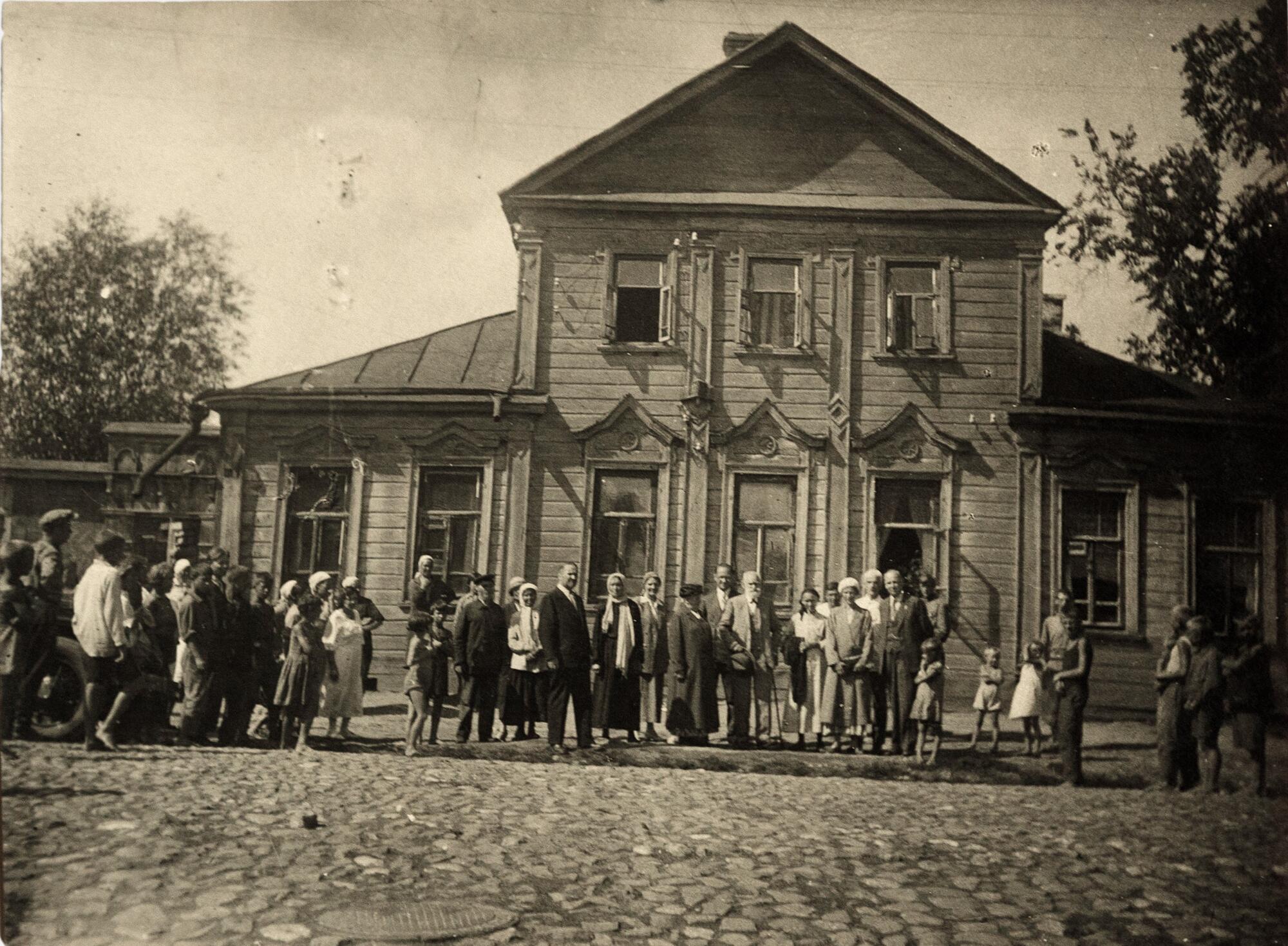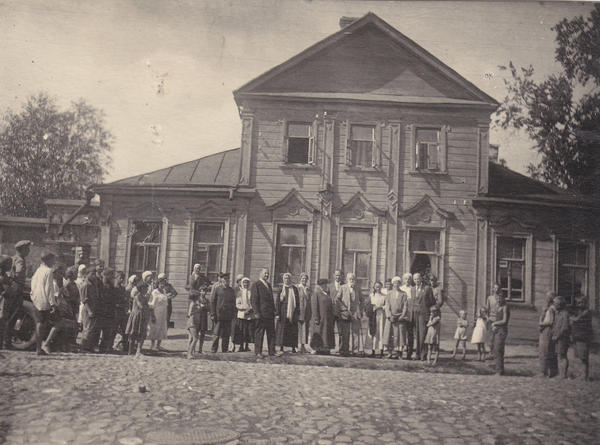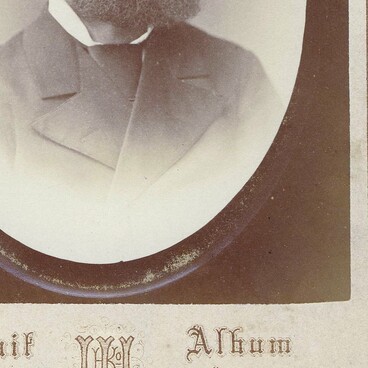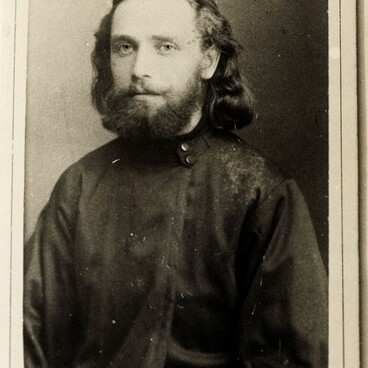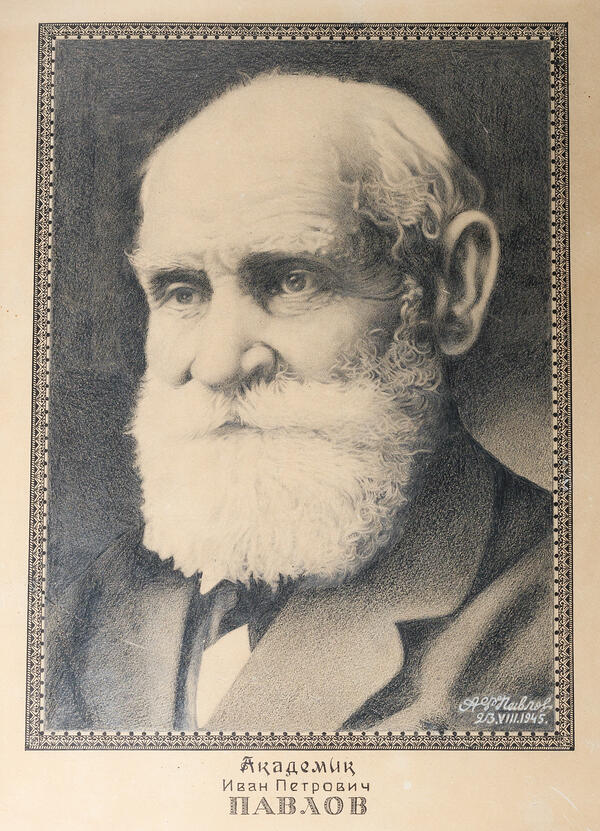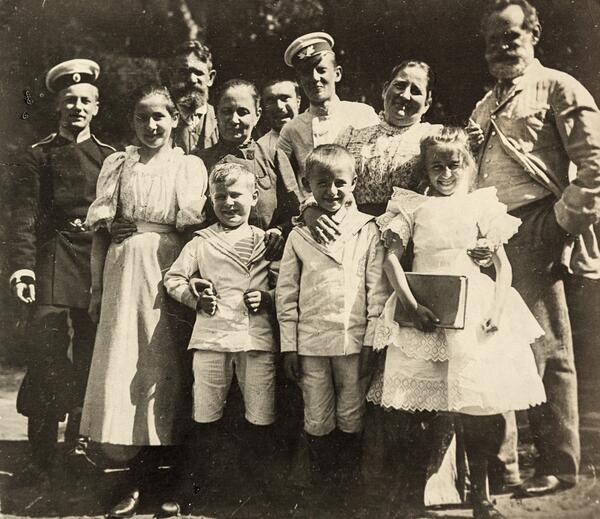This photograph was taken on August 19, 1935. The academician Ivan Petrovich Pavlov came to Ryazan and visited the house where he was born and spent the first 20 years of his life. Before leaving, the scientist spoke to the All-Union Radio and announced his intention to visit his parents’ graves. He went to Ryazan immediately after the 15th International Physiological Congress in Leningrad.
During this trip, Ivan Pavlov was accompanied by his wife Seraphima Vasilyevna, elder son Vladimir with his wife Tatyana, younger son Vsevolod with his wife Yevgenia, sister Lydia Petrovna with her son Alexander Dmitriyevich, and cousin Alexander Pavlov who took this photograph. The Pavlov family arranged a memorial service at the Saint Lazarus cemetery, where Ivan Pavlov’s parents had been buried and after the service, visited the family estate.
The house on Nikolskaya Street, now Pavlov Street, was built by the scientist’s grandfather. On the ground floor, there were the parents’ rooms, a large living room, a dining room, and a kitchen with a Russian stove. The second floor was occupied by the children — the four brothers Ivan, Dmitry, Pyotr, and Sergey, as well as their sister Lydia. Near the house, there was a garden with fruit trees, a lawn for playing gorodki, and a revenue house.
The estate was transformed into the Ivan Pavlov Estate Museum in 1946, on the 10th anniversary of the scientist’s death. When Pavlov visited Ryazan for the last time, his family estate housed communal apartments. All the residents looked forward to the scientist’s arrival, gave him a hearty reception, and asked him many questions.
Ivan Pavlov visited the places of his childhood and youth, as well as the advanced Ryazan collective farm “Red Star” in the Korablinsky District. The boat with the Pavlovs was greeted with applause. When local farmers spoke to Ivan Pavlov about the yield level of their fields, there was a misunderstanding: while they measured the yield in centners and tons per hectare, Pavlov used the traditional expressions such as “fivefold” and “sixfold” which were unknown to the young workers. The scientist’s nephew captured many moments of this journey, and Ivan Pavlov enjoyed looking at these photographs.
During this trip, Ivan Pavlov was accompanied by his wife Seraphima Vasilyevna, elder son Vladimir with his wife Tatyana, younger son Vsevolod with his wife Yevgenia, sister Lydia Petrovna with her son Alexander Dmitriyevich, and cousin Alexander Pavlov who took this photograph. The Pavlov family arranged a memorial service at the Saint Lazarus cemetery, where Ivan Pavlov’s parents had been buried and after the service, visited the family estate.
The house on Nikolskaya Street, now Pavlov Street, was built by the scientist’s grandfather. On the ground floor, there were the parents’ rooms, a large living room, a dining room, and a kitchen with a Russian stove. The second floor was occupied by the children — the four brothers Ivan, Dmitry, Pyotr, and Sergey, as well as their sister Lydia. Near the house, there was a garden with fruit trees, a lawn for playing gorodki, and a revenue house.
The estate was transformed into the Ivan Pavlov Estate Museum in 1946, on the 10th anniversary of the scientist’s death. When Pavlov visited Ryazan for the last time, his family estate housed communal apartments. All the residents looked forward to the scientist’s arrival, gave him a hearty reception, and asked him many questions.
Ivan Pavlov visited the places of his childhood and youth, as well as the advanced Ryazan collective farm “Red Star” in the Korablinsky District. The boat with the Pavlovs was greeted with applause. When local farmers spoke to Ivan Pavlov about the yield level of their fields, there was a misunderstanding: while they measured the yield in centners and tons per hectare, Pavlov used the traditional expressions such as “fivefold” and “sixfold” which were unknown to the young workers. The scientist’s nephew captured many moments of this journey, and Ivan Pavlov enjoyed looking at these photographs.
